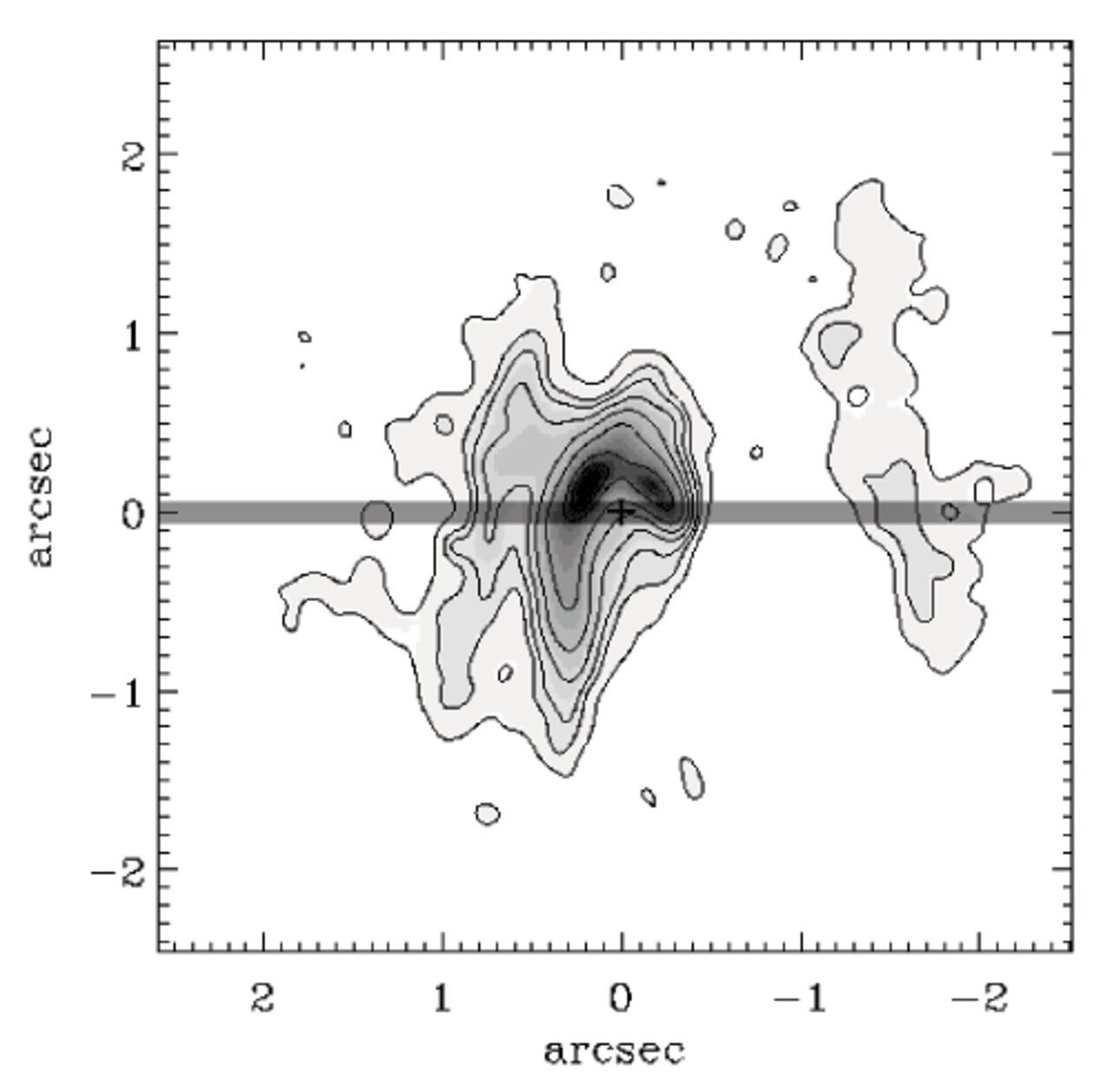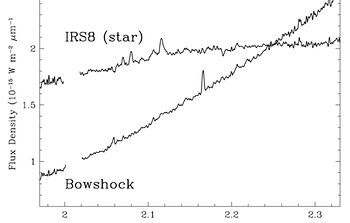Does IRS-8 contain the youngest and most massive star in the Galactic Center?
July 31, 2006

A team of Gemini Observatory astronomers led by Tom Geballe, and Spanish colleague Francisco Najarro (Instituto de Estructura de la Materia, Madrid), have proven that the star at the core of a spectacular cosmic bow shock near the Galactic Center is indeed an evolved massive star. It may also be the youngest, hottest and most massive star in the region of the Galactic Center.
The nature of the Galactic Center source IRS-8, one of the brightest compact mid-infrared sources in the central infrared cluster, was unknown until the advent of adaptive optics (AO) imaging in the infrared. Its dimensions on the sky are roughly 1 arcsecond across, and it appeared as a fuzzy blob to observers until its surprising structure was revealed at Gemini during early AO observations in 2000. In an previous article, Geballe et al. (2004) showed that the IRS-8 bow shock would be a straightforward consequence of the interaction of a dense, high velocity wind from a hot star that is traversing moderately dense interstellar gas. But at that time no detailed information was available about the star at the center of IRS-8, now known as IRS-8*.
To test if IRS-8* is indeed a hot and massive star, the team used the adaptive optics system ALTAIR with the near infrared spectrograph NIRI on Gemini North to separate the spectrum of the central star of IRS-8, presumably powering the bow shock, from the bow shock itself (Figure 1). Indeed the stellar spectrum was found to be that of such a star, with emission and absorption lines characteristic of an O5-O6 giant or supergiant.
Use of computer models to analyze the spectrum indicates that IRS-8* has an effective temperature of 36,000 K, a luminosity more than 350,000 times that of the Sun, and a mass of 44.5 Msun. If it is an isolated star its age would be only 3.5 million years old. Stars with these properties are observed to have wind mass loss rates of ~10-5 solar masses per year, and thus IRS-8* could easily power the observed bow shock.
None of the above properties are unusual for a hot and massive star. However, within the central parsec of the Galaxy, all of the other hot stars that have been identified to date are believed to be approximately 6 million years old. The properties of IRS 8* conflict with the generally accepted picture of the Galactic center in which all of the hot stars formed in a single burst. If IRS-8* is a close binary, however, exotic evolutionary scenarios involving mass exchange between the star pair could give it the appearance of a younger star than the other cluster members, even though it is actually the same age. In the near future the Gemini team intends to obtain more detailed spectra of IRS 8* which might reveal if the star is single or part of a massive binary system.
For more details, see the paper "The K-band spectrum of the hot star in IRS8: An Outsider in the Galactic Center", by Tom Geballe, Francisco Najarro, François Rigaut and Jean-Renè Roy, The Astrophysical Journal (2006 in press).
Reference: Geballe, T. R., Rigaut, F., Roy, J.-R. & Draine, B. T. 2004, ApJ, 602, 770


